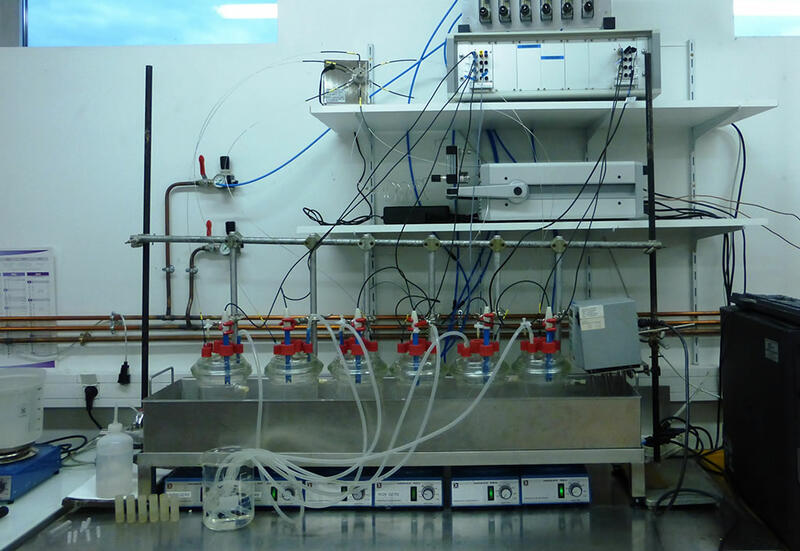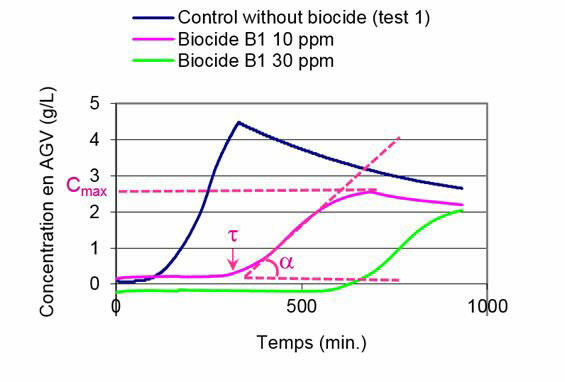
Anaerobic Biodegradability in water
Assessment of anaerobic treatments for papermaking effluents and additives
- Acidogenesis activity testing (volatile fatty acids production)
- Anaerobic biodegradability of organic matters (with biogas production)
- Methanogenesis inhibition testing
General informations
Anaerobic effluent treatment processes (operating without d’oxygen) are frequently employed in pulp and paper industry. This effluent treatment is realized with a pre-acidification tank (producing volatile fatty acids (VFAs) from organic substances) followed by in anaerobic digester converting VFAs into methane. Limitations in biodegradation and methane yields can be observed related with acidogenesis and/or methanogenesis inhibition. CTP effluent laboratory is equipped with two measurement systems in order to quantify separately acidogenesis inhibition and biomethane production (BMP). The following parameters can be determined :
- Inhibition of acidogenesis by process additives
- Testing anaerobic biodegradability of effluent or chemical
- Inhibition of methanogenesis by process additives
Thanks to this apparatus, the Team Water Energy Environment helps industrials to prevent or resolve operating problems related with anaerobic digesters.
Technical Data and Achievements
Acidogenesis activity testing
This test is performed by using synthetic glucose culture media inoculate with une acidogenous pre-culture from the mill site pre-acidification reactor.
The additive is pre-diluted with increasing concentrations in the synthetic media. A blank sample is also prepared for comparison. Inoculated media are incubated under gentle mixing and thermocontrol during 16 to 24h. Continuous pH measurement is realized.
The main parameters allowing acidogenesis inhibition characterisation are:
- Latency time (before VFA production)
- Maximum VFA concentration achieved (Cmax )
- VFA production kinetics (acetate production rate)
Anaerobic biodegradability in effluents
Effluents to be tested are pre-acidified before mixing with anaerobic granular sludges and placed after nitrogen inerting in reactors from AMPTS II Bioprocess control apparatus. COD is analysed at the beginning and the end of test and possibly at regular intervals over the test period (about 24-48h). Methane production is continuously recorded. All of these measurements make it possible to determine effluent biodegradation kinetics as well as residual COD achieved.
Methanogenesis activity testing
Evaluating the effect of paper additive on effluent anaerobic biodegradability is also possible. The additive is added to the effluent at different concentrations before contacting with anaerobic granular sludge. Methane production kinetics and residual COD are determined according to the method described above and compared to a control without additive.
 |
 |
|
| Acetogenesis inhibition measurement bench | Inhibition of acetogenesis by a biocide at different concentrations |